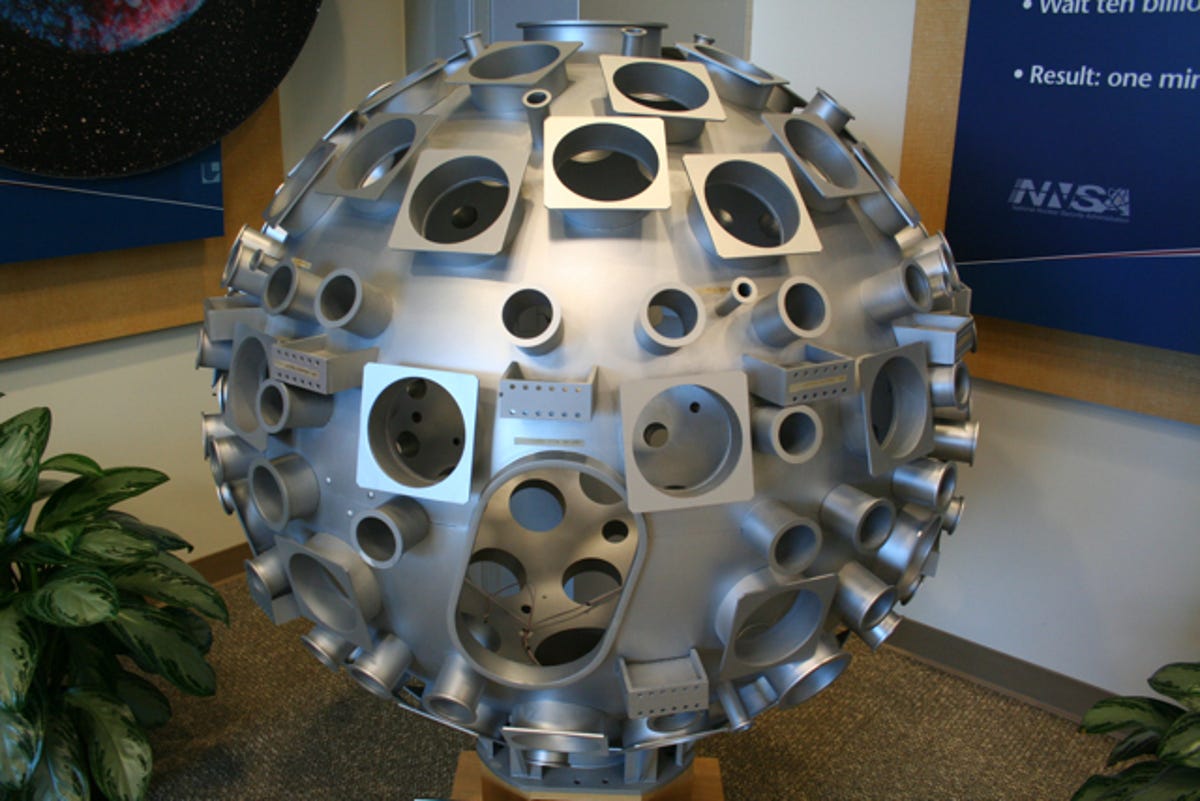Using star power for a clean-energy future (photos)
Road Trip at Home: At the Lawrence Livermore National Lab, scientists hope to prove that laser fusion can power the future.

Model of target chamber
In just 20 billionths of a second, the NIF's lasers deliver a payload of 500 trillion watts of power, more than 500 times the total amount of power created on the global power grid in the same amount of time.
This is a model of the target chamber that holds the actual fuel pellet target. The giant NIF system funnels the 192 laser beams into the chamber using a complex infrastructure of power amplifiers, mirrors, and more.
Read more in our related article: "Harnessing a star's power for clean energy"
NIF overview
Read more in our related article: "Harnessing a star's power for clean energy"
Laser bay
Read more in our related article: "Harnessing a star's power for clean energy"
Inside the target chamber
Read more in our related article: "Harnessing a star's power for clean energy"
Nanojoules to megajoules
Read more in our related article: "Harnessing a star's power for clean energy"
KDP crystal
The Lawrence Livermore National Lab came up with a quick-growth process in which it grows KDP crystals like this one in about two months.
Read more in our related article: "Harnessing a star's power for clean energy"
NIF control room
Read more in our related article: "Harnessing a star's power for clean energy"
National Ignition Facility
Read more in our related article: "Harnessing a star's power for clean energy"
Kill switch
Read more in our related article: "Harnessing a star's power for clean energy"
Little red target
Read more in our related article: "Harnessing a star's power for clean energy"
Injection laser
Read more in our related article: "Harnessing a star's power for clean energy"
Many bundles
Read more in our related article: "Harnessing a star's power for clean energy"
Laser glass
Read more in our related article: "Harnessing a star's power for clean energy"
Huge laser bay
Read more in our related article: "Harnessing a star's power for clean energy"
Pulse shaping
Read more in our related article: "Harnessing a star's power for clean energy"
CAMS
Read more in our related article: "Harnessing a star's power for clean energy"
Radiation area
Read more in our related article: "Harnessing a star's power for clean energy"
Injector magnet
Read more in our related article: "Harnessing a star's power for clean energy"
Analyzing magnet
Read more in our related article: "Harnessing a star's power for clean energy"
Ion gauge
Read more in our related article: "Harnessing a star's power for clean energy"
NIF owl
Read more in our related article: "Harnessing a star's power for clean energy"

